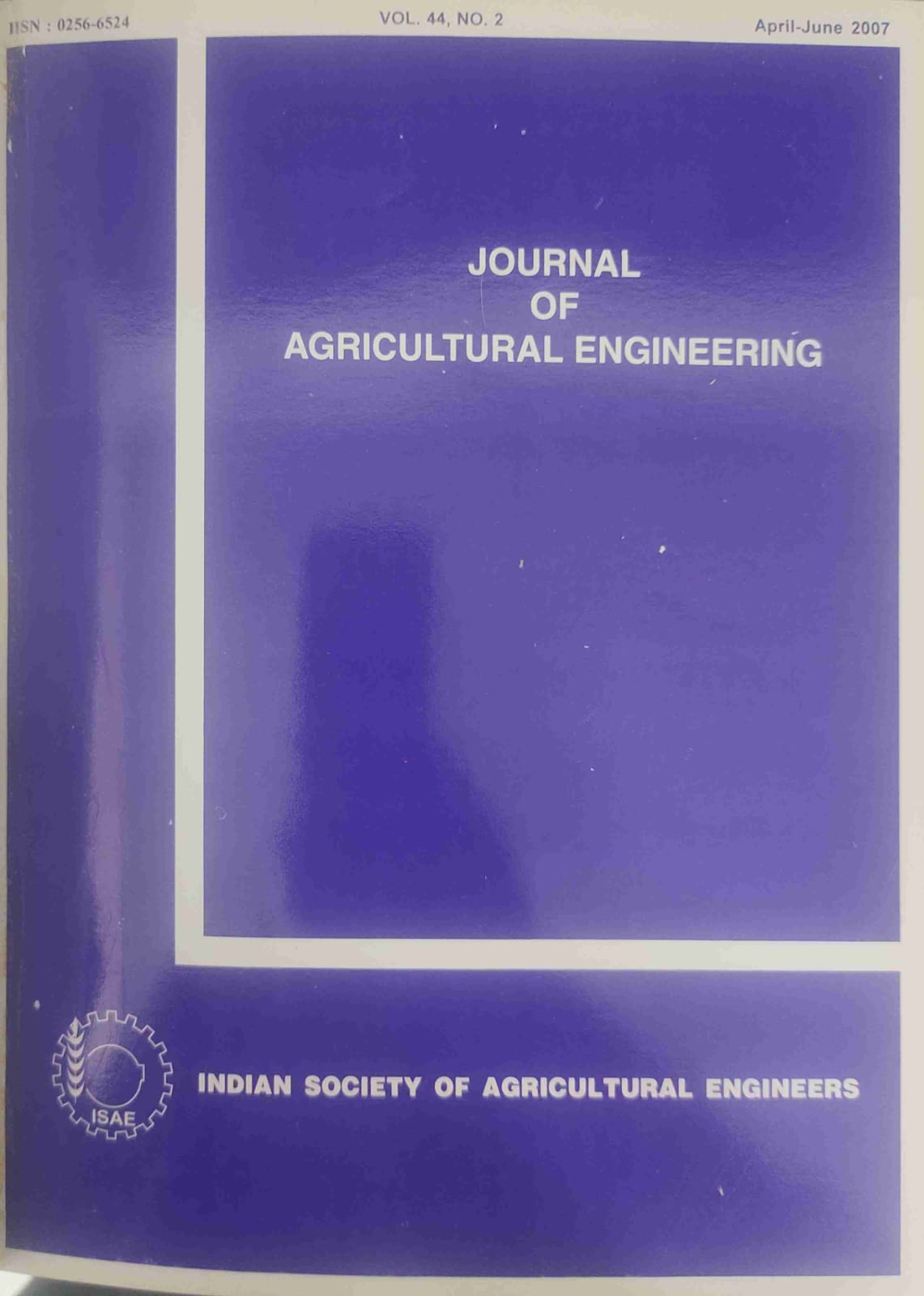An Experimental Investigation into the Performance of Conventional and Winged Type Subsoilers
DOI:
https://doi.org/10.52151/jae2007442.1251Abstract
An experiment was conducted at Crop Research Centre of G B Pant University of Agriculture and Technology, Pantnagar in Randomized Block Design to compare the performance of different types of subsoiler viz. conventional curved leg, conventional straight leg, winged straight leg and winged with shallow leading tines on the basis of draft, soil disturbance and specific draft at working depths of250, 300, 350 and 400 mm. The soil of the experimental field was silty clay loam (Sand 31%, Silt 37%, and Clay 32%). Results have shown the critical depth of conventional curved leg subsoiler at about 350 mm depth of operation. However, the critical depth for other subsoilers was not observed even upto 400 mm depth. At 350 mm working depth, the draft force for winged subsoiler with shallow leading tines increased by 39.75% and 31.81% over conventional curved leg and straight leg subsoilers while the soil disturbance increased by 3.03 (203.25%) and 2.35 (135.42%) times, thereby, reducing the specific draft by 53.90% and 44.00%, respectively
References
Arun Kumar. 2003. Design and development of winged subsoiler with leading tines and maize crop response to subsoiling. Unpublished Ph D Thesis. G B Pant University of Agriculture and Technology, Pantnagar.
Campbell R B; Riecosky D C; Doty C W. 1974. Physical properties and tillage of paleudults in the South Eastern Coastal Plains. J. Soil Water Conservation, 29, 220-224.
Carter M R; Holmstrom D A; Cochrane L M; Brenton P C; Roestel J A; Van Langille D R; Thomas W G; Van Roestel J A. 1996. Persistence of deep loosening of naturally compacted subsoils in Nova Scotia. Canadian J. Soil Sci., 76(4), 541-547.
Doty C W; Campbell R B; Reicosky D C. 1975. Crop response to chiseling and irrigation in soils with a compact A2 horizon. Trans. ASAE, 18, 668 - 672.
Godwin R J; Spoor G; Soomro' M S. 1985. The effect of tine arrangement on soil forces and distribution. J. Agric. Eng. Res., 30(5), 47-56.
Martin C K; Cassel D K; Kamprath E J. 1979. Irrigation and tillage effects on soybean yield in a costal plain soil. Agronomy J., 71, 592-594.
Nicolas M L; Reaves C A. 1958. Soil reaction to subsoiling equipment. Agric. Engng., 39(6), 340 – 343
Prinzio LAP di; Ayala V C D; Magdalena T J C; Di Prinzio LAP. 1997. Energetic test of different subsoiling techniques and its effects upon the soil bulk density. Agro Ciencia, 13(1),61-67.
Prinzio LAP di; Magdalena T J C; Ayala V C D; Di Prinzio LAP. 1996. Comparative test of three nonconventional subsoiling techniques. Agro Ciencia, 12(1), 37-42.
SpoorG; Godwin RJ. 1978.An experimental investigation into the deep loosening of soil by rigid tines. J. Agric. Engng. Res., 23 (3), 243 - 258.
Thakur T C; Kumar Arun. 1999. Subsoil compaction and methods of alleviation-A Review. Agric. Engng. Today, 23(3-4), 58- 74
Upadhyaya S K; Williams T H; Kemble L J; Collins N E. 1983. Energy requirements for subsoiling in coastal plain soils. ASAE Paper No. 83-1031, 24.
Wolkowski R P. 1990. Relationship between wheel traffic induced soil compaction, nutrient availability-and crop growth- a review. J. Production Agriculture, 3(4), 460-469.














